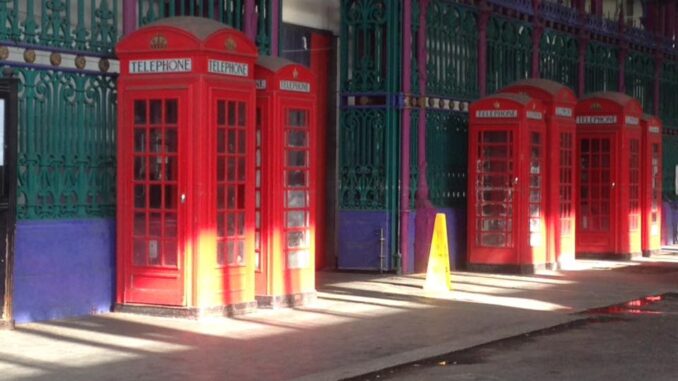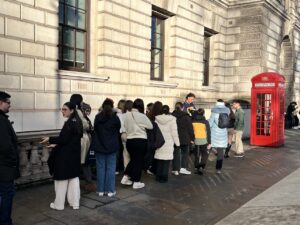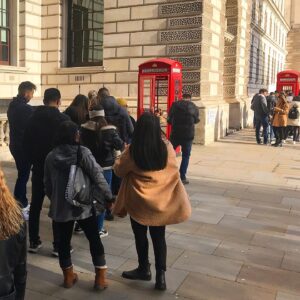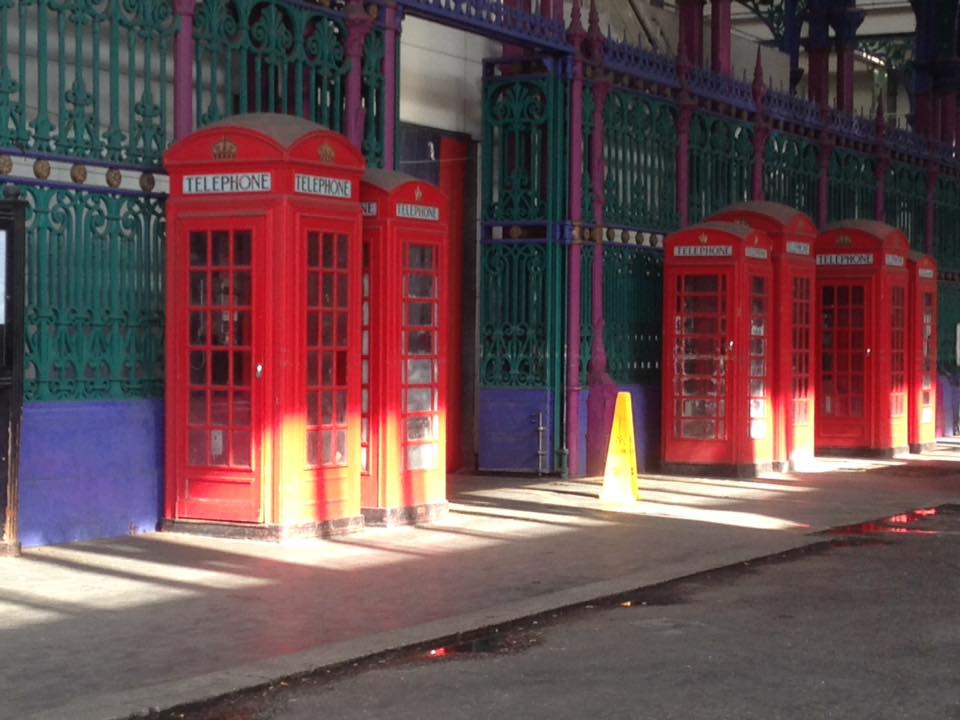
A redundant 20th century artefact, repurposed for the tourist economy. But enough about me, let’s talk about phone boxes.
Go to Parliament Square and you will see large numbers of tourists indulging in the great British pastime of queuing. Specifically they’re standing in line for a photo of themselves in a classic red London phone box with Big Ben* in the background. (The ones around the corner in Whitehall are much less busy.)
The red phone booth, like our red buses and pillar (post) boxes, speak to visitors as ‘typically’ London (even though, as we all know, that is a tweely nostalgic version of a much more exciting city). But why do these things still exist, when the old fixed line telephones are all but dead? (In fact, many of the surviving booths don’t actually have phones still inside – they are literally empty boxes.)


It’s because what we identify as the ‘classic’ phones boxes have an important creator – the architect Giles Gilbert Scott. He designed both the Battersea and Bankside power stations, Liverpool Cathedral, the New Bodleian Library in Oxford, and Waterloo Bridge. As well as these large scale projects he was also responsible for both the ‘K2’ and ‘K6’ phone boxes (the ‘K’ standing for ‘kiosk’).
The K2 came out in 1924 with the slightly smaller and cheaper K6 making its first appearance in 1935. This latter one swiftly becoming the ‘dominant variant’, with more than 70,000 of the model ultimately being installed. Later kiosks lacked the intricacy and the charm of the Scott design so when, in the 1980s, boxes started to be removed, it was only the K2s and K6s that generated preservation campaigns.
What then happened was that local authorities used planning powers to “list” surviving kiosks as they might an architecturally important building that was threatened, and it is thought that around 3,000 red phone boxes have been ‘Grade II listed’ and preserved.
In fact Grade II listing goes beyond preservation and forbids ‘material change’. This includes painting it any colour other than the British Standard BS381C-Red539 or “currant red” as it is known.
All the boxes in Parliament Square and Whitehall (which are a mix of K2 and K6s) are listed by English Heritage, so they remain, hollow set dressing on tourist snapshots.

P.S. The original prototype of Scott’s K2 can be found in the entrance way to Burlington House (home of the Royal Academy) on Piccadilly.
P.P.S. Scott was a great fan of the architect Sir John Soane, and his design for the K2 is said to be based on Soane’s tomb in Old St Pancras churchyard.
*Yes, yes, I’m well aware that Big Ben is the bell and I should talk about the ‘Elizabeth Tower’, but no one bar the most pedantic guides ever calls it that, do they?

